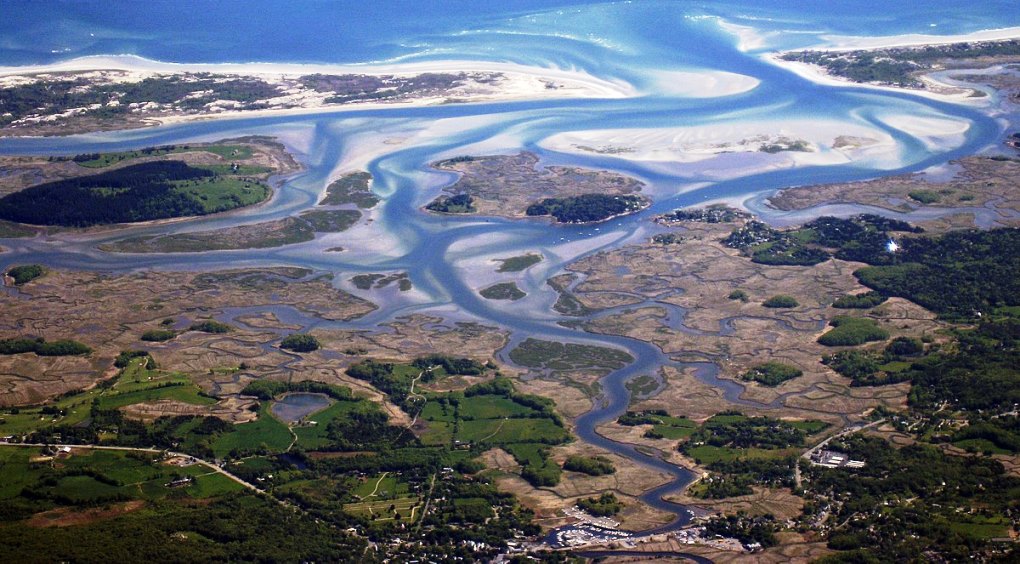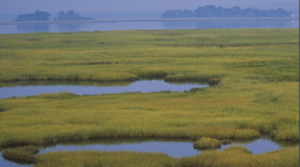The Great Marsh Resilience Partnership (GMRP) effort to restore the Great Marsh, led by the National Wildlife Federation and dozens of local project partners, has been awarded a $1.2 million grant through National Fish and Wildlife Foundation’s $29.8 million 2018 National Coastal Resilience Fund.
The Great Marsh estuary includes New England‘s largest saltmarsh, extending from Cape Ann in northeastern Massachusetts to the southeastern coast of New Hampshire.
The National Wildlife Federation has been collaborating with the GMRP since 2014 to enhance the resilience of the marsh to sea level rise and coastal storms through a restorative, multi-pronged approach that has included marsh and dune restoration, community planning, and sediment transportation modeling.
Surrounding communities are reaping the benefits of improved public lands, healthier fish and wildlife habitat, and a strengthened buffer against coastal storms. The New England office of the U.S. Environmental Protection Agency recognized GMRP with a 2017 Environmental Merit Award.
NFWF, in partnership with NOAA, launched the NCRF in 2018 to support on-the-ground projects that engage communities and reduce their vulnerability to growing risks from coastal storms, sea-level rise, flooding, erosion, wildfires, drought and extreme weather through strengthening natural ecosystems that also benefit fish and wildlife. This award supports strategies that were identified as high-priority next steps to the long-term health and function of the Great Marsh.
“This work includes a mix of traditional and innovative approaches to holistically address the many threats facing this tremendous natural resource,” said Chris Hilke, National Wildlife Federation Senior Program Manager, who directs the project.
“This project is protecting Great Marsh communities from increasingly powerful storms and sea level rise while also protecting critical wildlife and habitat resources. Hurricane Sandy showed us that our coastal communities are ill-equipped to handle severe storms and flooding. With climate change bringing more of these mega-storms to our shores, it is imperative we do everything we can now to bolster our natural defenses,” he continued.
The Great Marsh restoration project has already produced results:
- Community vulnerability analyses and adaptation strategies have been integrated into a comprehensive Great Marsh Coastal Adaptation Plan;
- The invasive species Pepperweed and Common reed have been fully eradicated from 400 acres of saltmarsh across the project geography;
- Roughly 3,000 linear feet of dunes were established in front of vulnerable coastal infrastructure in Salisbury, MA, which included 3.5 acres of dune plantings and dune fencing (5,000 Iinear feet). Dune plantings were used as an opportunity to engage 350+ youth, 28 educators, hold 25 community trainings & community planting events;
- Community resiliency Planning Teams have been established across the six shoreline communities. The Planning Teams have identified vulnerable high priority assets and the National Wildlife Federation & USGS have completed vulnerability assessments for each community and associated suite of vulnerable assets. Over 100 community-specific adaptation projects have been identified and prioritized;
- 1,200 hydro-barriers (dams, water crossings, culverts etc.) have been assessed and prioritized for retro fits and upgrades. Draft design specifications have been developed for the top 100 priority barriers; and
- Boston University (data inputs) and Woods Hole Group (model development) have developed a sediment transport model for the marsh (in partnership with numerous other entities) to inform future project implementation.
Featured photo of Great Marsh in Massachusetts is by Doc Searls via Wikipedia.
See National Coastal Resilience Fund website.


